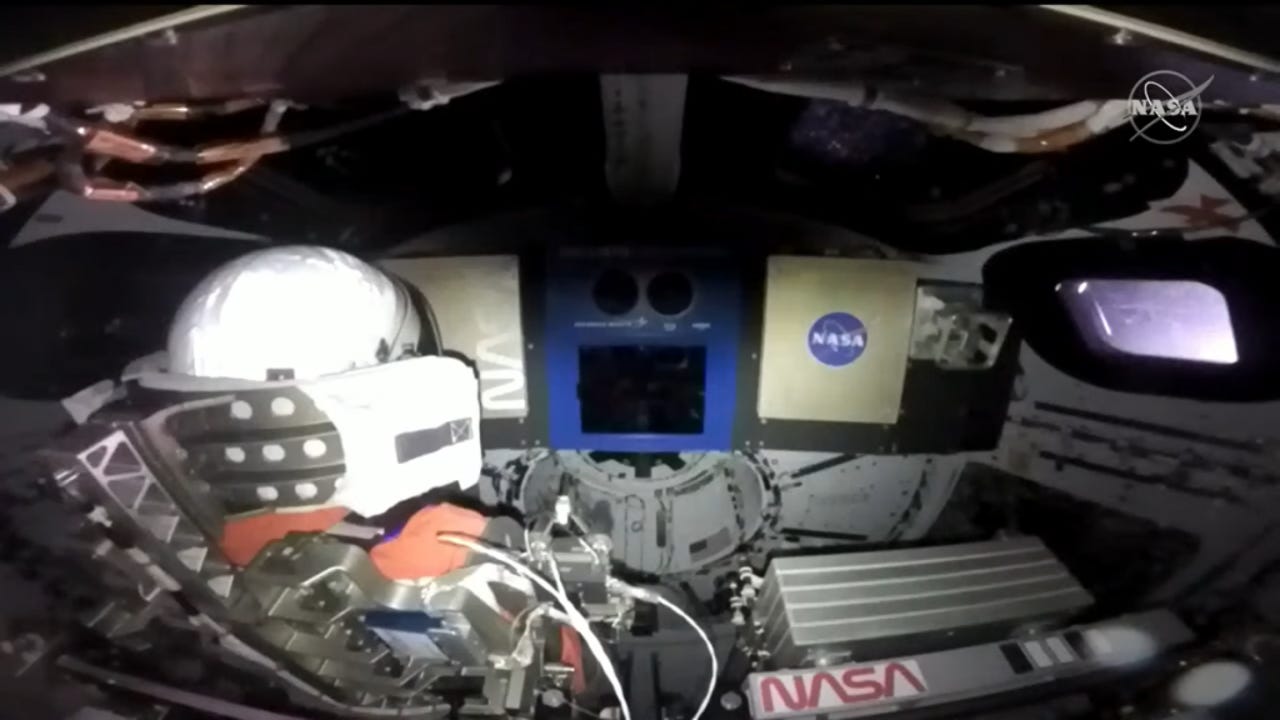
































A view inside the Artemis I Orion capsule.
Image: NASA TVArtemis I may have now sent the Orion spacecraft on its way to the Moon, but the hard work is far from over for NASA. After Wednesday's early morning liftoff with NASA's Space Launch System, the Orion spacecraft has now completed its first course correction burn to propel it towards the Moon for its 25.5-day mission around the lunar surface.
Orion separated from the SLS upper stage a few hours after liftoff and commenced an 18-minute trans-lunar injection burn that propelled it to the Moon. Once separated, it began flying with the European Space Agency's (ESA) service module.
At 9:32am on Wednesday, November 16, flight controllers in the Mission Control Center at NASA's Johnson Space Center in Houston conducted the first outbound trajectory correction burn using ESA's service module.
"The burn tested Orion's main engine for the first time and adjusted the spacecraft's course toward the Moon," NASA notes in a blogpost.
Also:What is Artemis? Everything you need to know about NASA's new moon mission
Mission Control plans to carry out several more course correction burns on journey. NASA plans for a second outbound trajectory burn on Thursday using the auxiliary thrusters. These will be used for most trajectory correction burns.
SLS's other payloads included 10 small CubeSats for research focusing on the Moon, the Sun, a near-Earth asteroid, and Earth.
According to NASA, these CubeSats were deployed by timer from an adapter attached to the SLS's upper stage.
Flight controllers in Houston also carried out tests to verify that Orion's four solar array wings do perform according to the models and simulations NASA used to design the wings. NASA tested this by firing Orion's reaction control system thrusters. It wants to see how the solar array wings react to that specific firing sequence.
SLS and Orion feature a combined 55 engines and motors to propel Orion from the launch pad, around the Moon, and back to Earth.
NASA also calibrated the optical navigation system and gathered imagery using the spacecraft's cameras.
Artemis I is the first in several Artemis missions planned over the next decade. Artemis is an uncrewed mission that will help inform future Artemis missions with crew for long-term deep-space exploration.
 Hot Tags :
Innovation
Space
Hot Tags :
Innovation
Space